Sanderling, Drieteenstrandloper, Maçarico-branco, Correlimos Tridáctilo
Spotted in the Alentejo region of Portugal. Sanderling sound
The Sanderling (Calidris alba, syn. Crocethia alba or Erolia alba) is a small wader. It is a circumpolar Arctic breeder, and is a long-distance migrant, wintering south to South America, South Europe, Africa, and Australia. It is highly gregarious in winter, sometimes forming large flocks on coastal mudflats or sandy beaches.
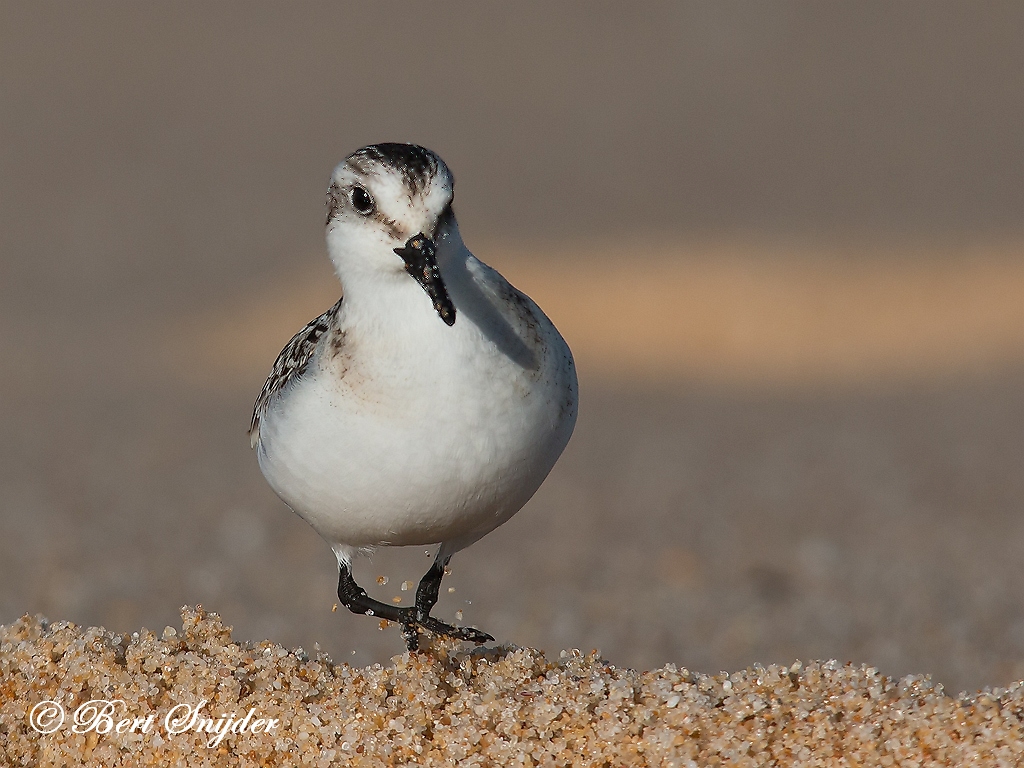
More photos at the bottom of this page.
It is somewhat unlike other sandpipers in appearance, which has led to the suggestion that it should be placed into a monotypic genus Crocethia. A more recent review (Thomas et al., 2004) indicates, however, that the sanderling is a fairly typical “stint” or small sandpiper and should be separated from the large knots with its closest relatives in a distinct genus.
This bird is similar in size to a Dunlin, but stouter, with a thick bill. It shows a strong white wingbar in flight, and runs along the sandy beaches it prefers with a characteristic “bicycling” action, stopping frequently to pick small food items. It eats small crabs and other small invertebrates. In spring, birds migrating north from South America consume large numbers of horseshoe crab eggs in the Delaware Bay area.
In spring, the birds arrive on the High Arctic breeding grounds (see map), where they lay 3–4 eggs in a ground scrape. On the nesting grounds, these birds mainly eat insects and some plant material.
The Sanderling is one of the species to which the Agreement on the Conservation of African-Eurasian Migratory Waterbirds (AEWA) applies.
The Sanderling is a small plump sandpiper, 18–20 cm in length. Its weight ranges from 40-100 g. The winter bird is very pale, almost white apart from a dark shoulder patch. This is the source of the specific name, alba, which is the Latin for “white”. Later in the summer, the face and throat become brick-red. The juvenile bird is spangled black and white, and shows much more contrast than the adult. Sanderling behavior is distinctive, but visually, if the size is misjudged, a breeding plumage sanderling can be mistaken for some varieties of stint, or a winter plumage sanderling can be mistaken for a Dunlin or Red Knot. It can be told from other small wading birds, given good views, by its lack of a hind toe.
The Sanderling breeds in the High Arctic areas of North America, Europe and Asia. In North America it breeds in the Canadian Arctic Archipelago, Nunavut, Greenland (and to a lesser extent Alaska), in Eurasia it breeds Spitsbergen, and areas of northern Russia from the Taymyr Peninsula to the New Siberian Islands. In the northern winter it has a nearly cosmopolitan distribution across the world’s marine coasts. It is a complete migrant, travelling between 3,000 to 10,000 km from its breeding grounds to its wintering sites. Birds that travel further also arrive later and leave sooner. The majority of adults leave the breeding grounds in July and early August, whereas juvenile birds leave in late August and early September. The northward migration begins in March at the southern end of their winter distribution.
The breeding habitat of the Sanderling is coastal tundra north of 5 °C July isotherm. The species typically chooses nesting sites on dry stony areas near wet areas, from 60 m above sea level to 800 m. During the winter and its migration it is most commonly found on coastal sandy beaches, but also occurs on tidal sand flats mud flats and the shores of lakes and rivers. More infrequently it make occur on rocky shores.
Sanderlings feed on invertebrate prey buried in the sand in the upper intertidal. In North America this largely consists of the isopods, Excirolana linguifrons and Excirolana kincaidii, and the mole crab, Emerita analoga. When the tide is out these crustaceans live in burrows some way beneath the surface. When the tide comes in, they move into the upper layers of sand so as to be able to feed on the plankton and detritus that washes over them with each wave. They then burrow rapidly down again as the water retreats. They leave no marks on the surface so the sanderlings hunt for them by plunging their beaks into the sand at random, consuming whatever they find. Their bills can only penetrate two or three centimetres and as the water swirls around and retreats, the sand is softer and this makes it easier for the birds’ beaks to penetrate further. In the spring, when much breeding activity is taking place in the benthic community, there may be as many as 4000 invertebrates per square metre, but their average size is smaller than later in the year. The birds appear to rush madly around at the edge of the surf but in reality they are maximising their chances of catching as many prey animals as possible when they are at their most vulnerable near the surface.
Sanderlings are territorial, with the male aggressively defending its territory. They may either form monogamous pairs or polyandrous (one female and two male) pairings.
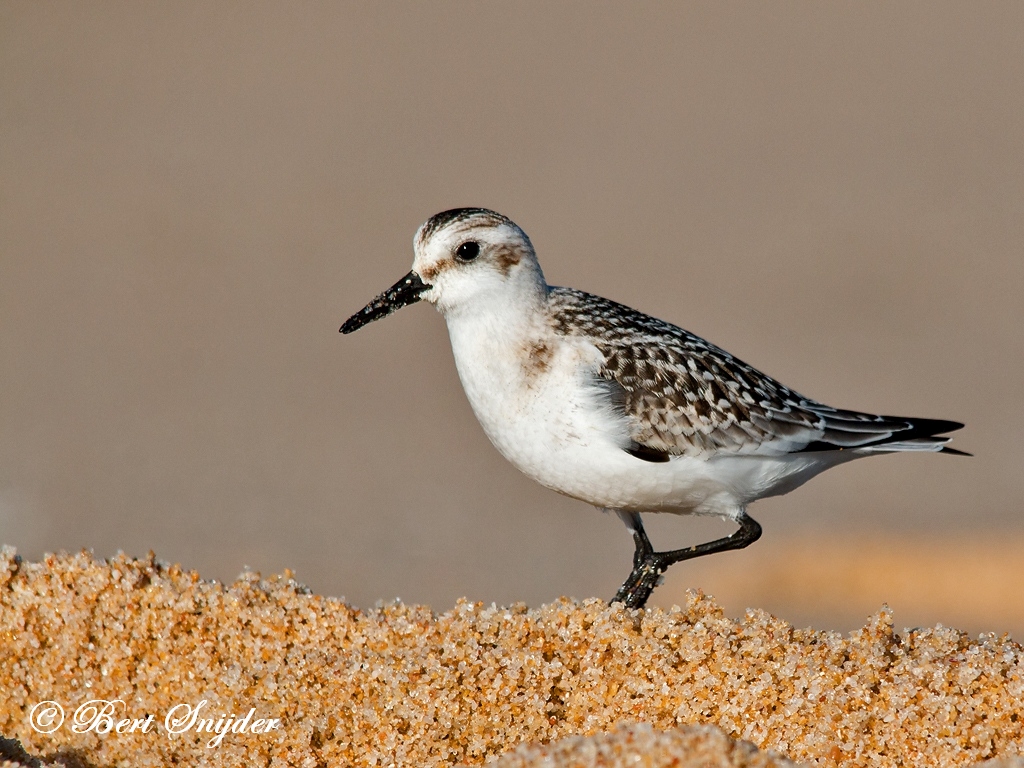
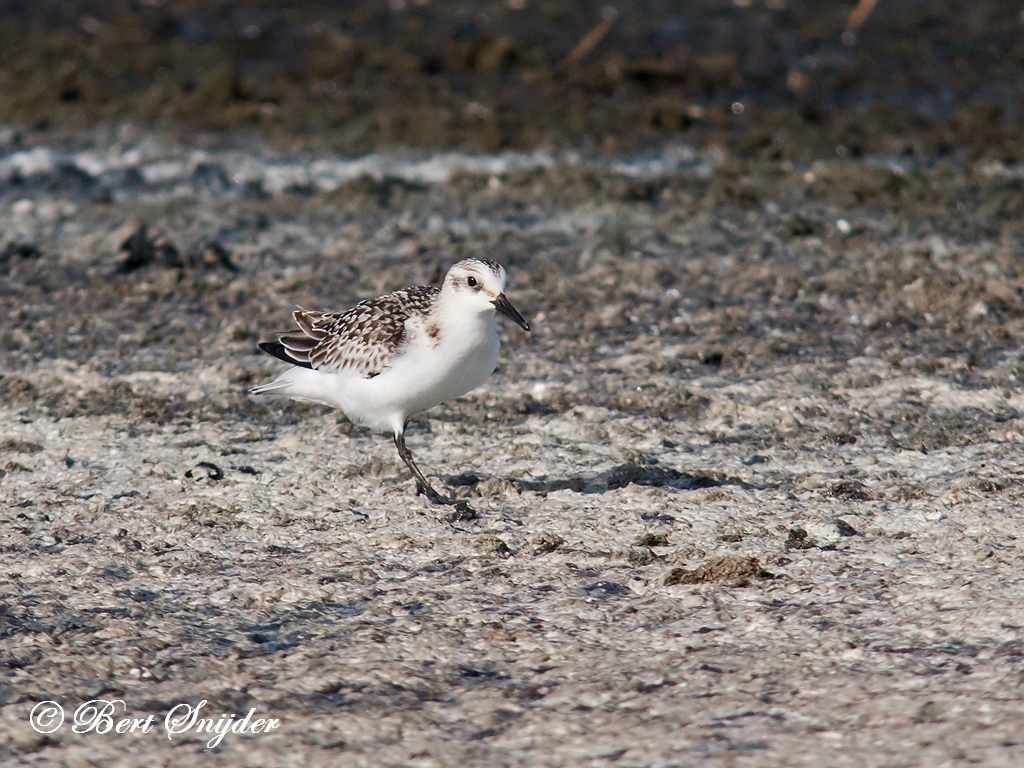


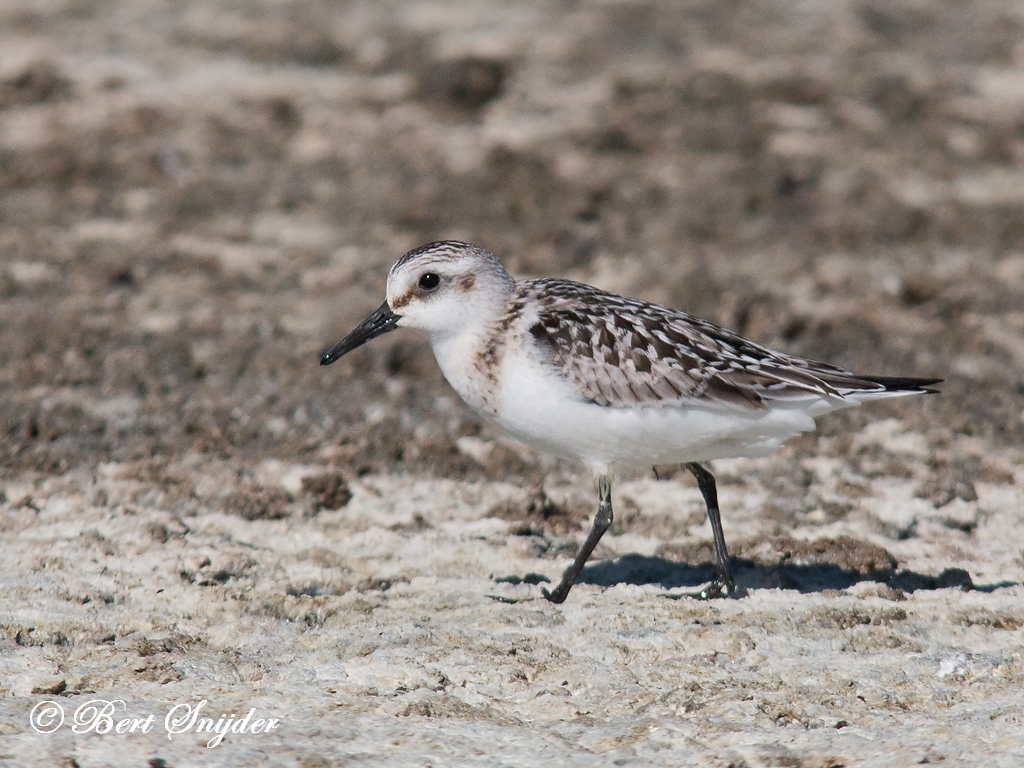
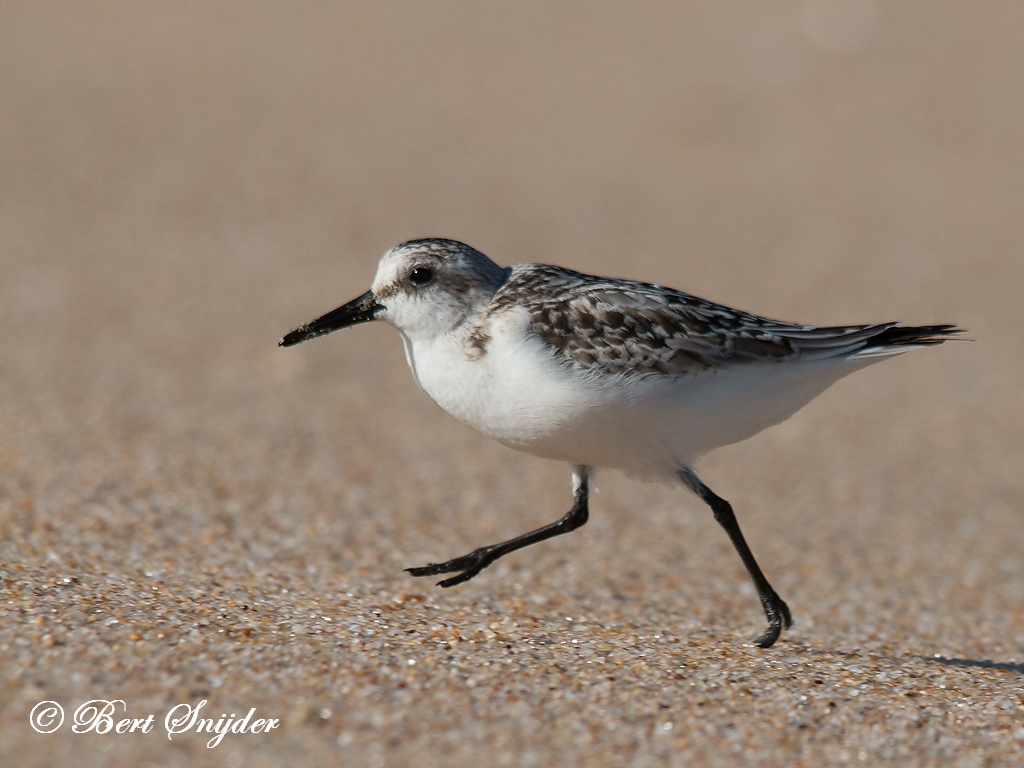
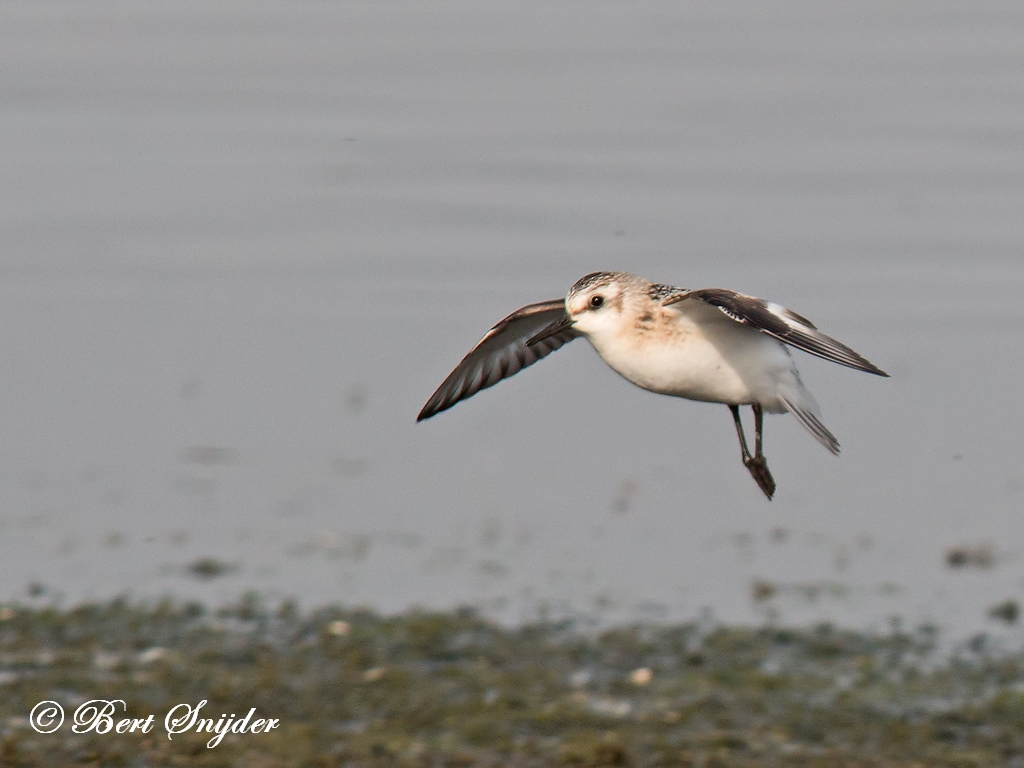
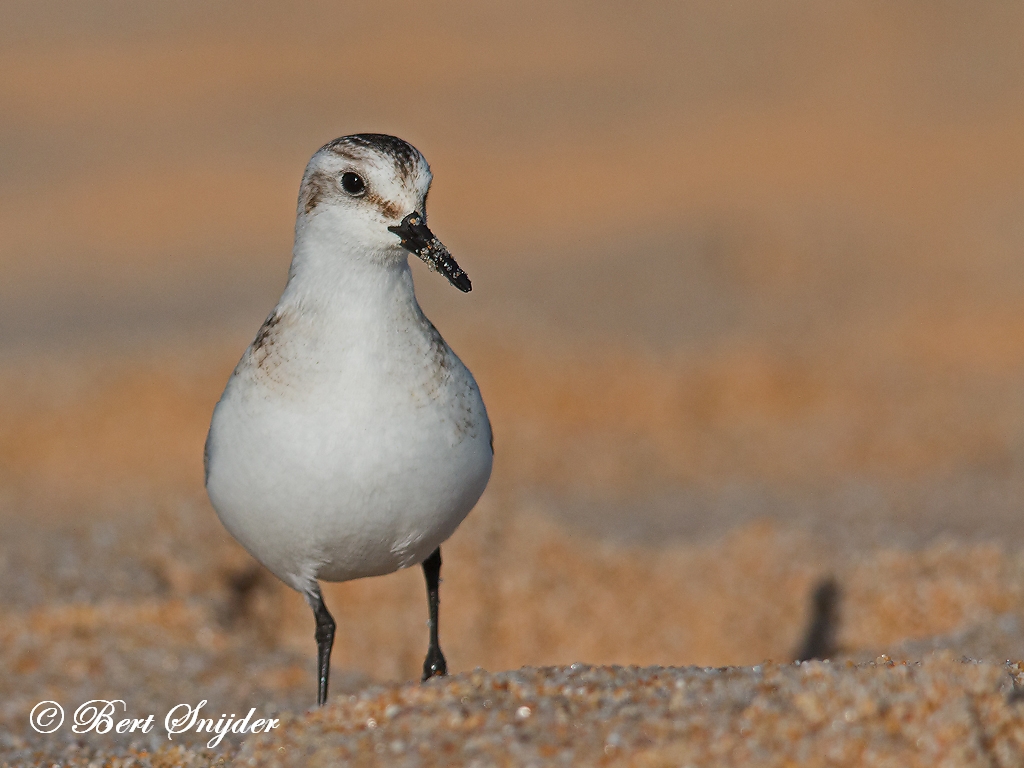
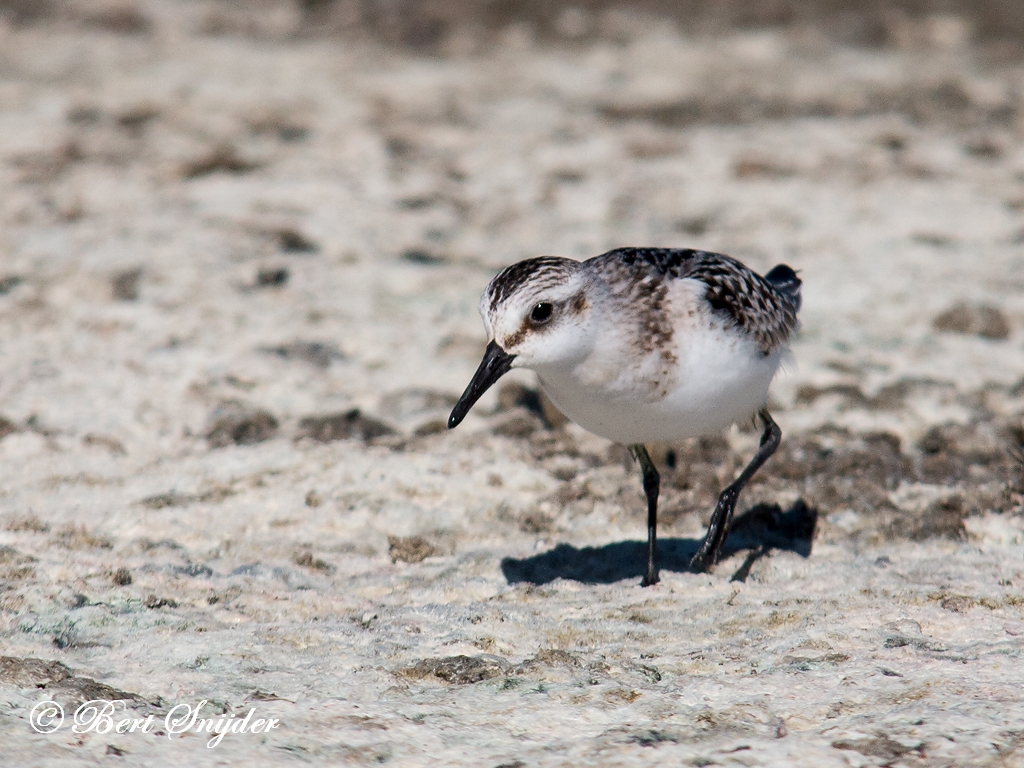
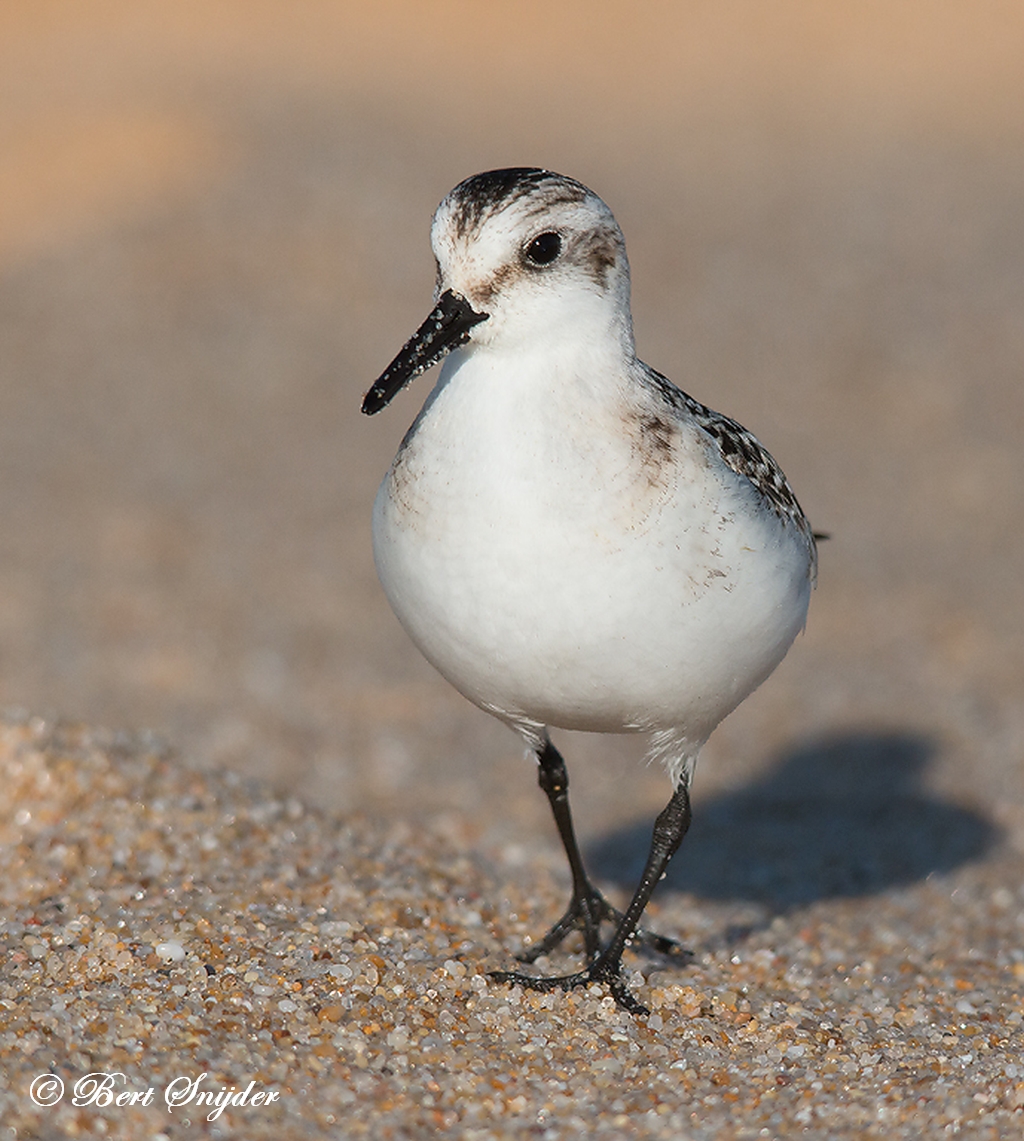
Other synonyms:
Afrikaans: Drietoonstrandloper
Asturian: Mazaricu Analayeru
Azerbaijani: Adi qumluq cüllütü
Breton: Ar sourouc’han gwenn, Sourouc’han gwenn
Catalan: Corriol tres-dits, Territ gros, Territ tresdits
Catalan (Balears): Corriol tres-dits
Valencian: Territ gros
Czech: Jespák písecný, jespák píseèný
Welsh: Hutan lwyd, Llwyd y tywod, Pibydd y traeth, Pibydd y tywod
Danish: Sandløber
German: Sanderling
English: Ruddy Plover, Sanderling
Esperanto: sablokalidro
Spanish: Alzacolita arenera, Chorlito blanco, Correlimos Arenero, Correlimos Blanco, Correlimos grande, Correlimos Tridactilo, Correlimos Tridáctilo, Playerito blanco, Playerito Blanquito, Playero arenero, Playero Blanco, Playero Gordo, Zarapico Blanco
Spanish (Argentine): Playerito blanco
Spanish (Chile): Playero blanco
Spanish (Colombia): Playero Blanco
Spanish (Costa Rica): Correlimos grande, Playero arenero
Spanish (Cuba): Zarapico Blanco
Spanish (Dominican Rep.): Playerito Blanquito
Spanish (Honduras): Alzacolita arenera
Spanish (Mexico): Playero Blanco, Playero Gordo
Spanish (Nicaragua): Correlimos Arenero
Spanish (Paraguay): Playerito blanco
Spanish (Uruguay): Chorlito blanco, Playerito Blanco
Spanish (Venezuela): Playero Arenero
Estonian: Leeterisla, Leeterisla, leeterüdi , leeterüdi, leeterüdi (leeterisla), Leeterüdi e. leeterisla
Basque: Territ tresdits, Txirri zuri, Txirri zuria
Finnish: Pulmussirri
Faroese: Sandgrælingur
French: Bécasseau sanderling, Sanderling
Irish: Laidhrín geal, Luathrán
Guadeloupean Creole French: Gros Maringouin blanc
Gaelic: Luatharan Glas
Galician: Pilro tridáctilo, Territ tresdits
Guarani: Chululu’i
Manx: Coar gheinnee
Haitian Creole French: Bécassine Blanche
Hawaiian: Hunakai
Croatian: Bijeli Žalar, Troprsti žalar
Hungarian: Fenyérfutó
Indonesian: Kedidi Putih
Icelandic: Sanderla
Italian: Piovanello tridattilo
Inuktitut: Siorarsiooq
Japanese: miyubishigi, Miyubi-shigi
Greenlandic: Siorarsiooq
Cornish: Pyber treth
Latin: Calidris alba, Calidris arenaria, Calidris leucophaea, Crocethia alba, Ereunetes albus
Lithuanian: Smiltinukas
Malay: Kedidi Kapak
Maltese: Pispisella Bajda
Dutch: Drieteen strandloper, Drieteenstrandloper
Norwegian: Polarløper, Sandløper, Strandløper
Polish: piaskowiec
Portuguese: batuíra-de-areia, maçarico-branco, Macarico-de-papo-vermelho, Macarinco branco, Macarinco-branco, pilrito d’areia, Pilrito-d’areia, Pilrito-das-praias, Pilrito-sanderlingo, sanderlingo, vedeta-da-praia
Portuguese (Brazil): batuíra-de-areia, Maçarico-branco, Macarico-de-papo-vermelho, vedeta-da-praia
Romansh: Rivarel sabluner
Russian: Peschanka
Scots: Luatharan glas
Slovak: Pobrežník belavý
Slovenian: beli prodnik, pešcenec
Albanian: Gjelëza me tri gishta
Serbian: Beli prudnik, Beli žalar, Prudnik, žalar, žalar (prudnik)
Swedish: Sandlöpare
Swahili: Chokowe Tumbo-jeupe
Travel Birdwatching Holiday Alentejo, Vacation Portugal for birders guided birdwatching Tours and Trips.